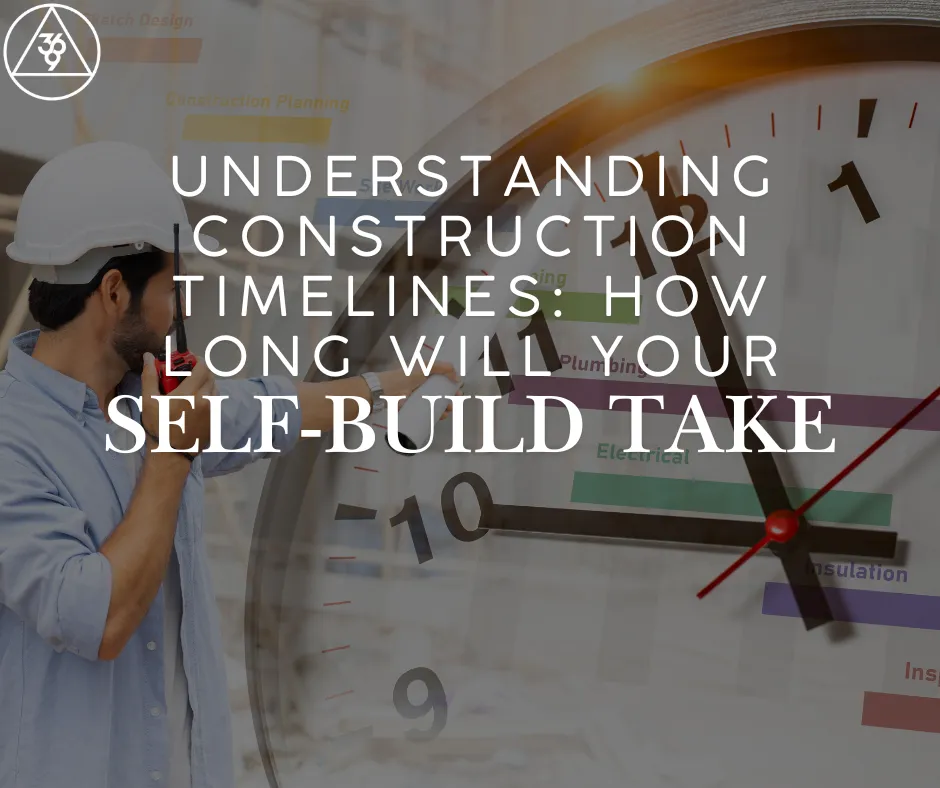
Understanding Construction Timelines: How Long Will Your Self-Build Take?
Understanding Construction Timelines: How Long Will Your Self-Build Take?
Building your dream home is an exciting journey, but it’s not something that happens overnight. A self-build project takes time, and understanding the construction timeline can help you plan, stay organised, and avoid frustration.
Let’s break down the typical stages of a self-build and how long each part might take, so you can have a realistic idea of when you’ll move into your dream home.
Why Does a Construction Timeline Matter?
A construction timeline isn’t just a rough guess—it’s a roadmap that:
Keeps You Organised: Knowing what happens when helps you stay on track.
Prevents Delays: A clear timeline ensures contractors and materials are ready when needed.
Manages Costs: The longer a build takes, the more it may cost in labour and rental accommodation.
By understanding the timeline, you can make smarter decisions and keep your project running smoothly.

How Long Does a Self-Build Take?
The time it takes to build a house depends on factors like design complexity, weather, and how well everything is planned. On average, a self-build in the UK takes 12–24 months from start to finish.
Here’s a breakdown of the key stages and how long they might take:
1. Planning and Design (2–6 Months)
This is where your dream home takes shape on paper. Tasks include:
Finding a Plot: Choosing the right land for your build.
Designing Your Home: Working with an architect or designer.
Applying for Planning Permission: Getting approval from your local council.
Tips to Save Time:
Research planning rules before buying land.
Submit detailed plans to avoid back-and-forth with the council.
2. Groundworks and Foundations (1–3 Months)
Once you’ve got the green light, it’s time to prepare the site:
Clearing the Plot: Removing trees, rocks, or old buildings.
Installing Utilities: Laying pipes for water, electricity, and gas.
Digging and Laying Foundations: Creating a solid base for your home.
Factors That Can Cause Delays:
Poor weather (rain can slow down digging or concrete setting).
Unexpected ground conditions, like unstable soil.
3. Structural Build (3–6 Months)
This stage brings your house to life:
Building Walls: Using materials like bricks, timber, or blocks.
Adding the Roof: Installing trusses, tiles, or flat roofing.
Fitting Windows and Doors: Making the house weatherproof.
What to Watch For:
Delays in material delivery.
Structural inspections to meet building regulations.
4. Internal Work (4–8 Months)
With the shell of the house complete, it’s time to focus on the inside:
Plumbing and Electrical Work: Installing pipes, wires, and outlets.
Insulation and Plastering: Making walls and ceilings smooth and energy-efficient.
Flooring and Painting: Adding the finishing touches.
Tips for Staying on Track:
Order materials in advance to avoid supply chain delays.
Regularly communicate with contractors to ensure progress.
5. Final Touches and Handover (1–2 Months)
This is the exciting part—your house becomes a home:
Installing Fixtures: Fitting kitchens, bathrooms, and built-in furniture.
Landscaping: Creating gardens, driveways, and outdoor spaces.
Snagging: Fixing any small issues before moving in.
Don’t Forget:
Budget for delays in snagging or final inspections.
Ensure all certifications, like energy ratings and warranties, are complete.

Common Delays and How to Avoid Them
Here are some common reasons why timelines can stretch—and how to stay on top of them:
Weather: Build during milder months when possible.
Planning Permission Issues: Work with experienced designers who know the rules.
Material Shortages: Order key materials early.
Poor Coordination: Hire a project manager or take a course to learn how to manage contractors effectively.
How We Can Help
At 369 CUG’s we use Self-Build Mastery, to help self-builders create realistic construction timelines, manage contractors, and avoid costly delays. From the first sketch to the final handover, our experts guide you every step of the way to ensure your dream home is built on time and within budget.
Plan Your Build with Confidence
A self-build is a marathon, not a sprint—but with careful planning and realistic expectations, you’ll cross the finish line with a home you’ll love for years to come. By understanding the timeline and working with the right team, you’ll avoid unnecessary stress and enjoy the process of creating your perfect home.
Ready to start your self-build journey? Visit the Self-Build Mastery Page on our website for expert advice, resources, and tools to help you plan your timeline and manage your project like a pro.
